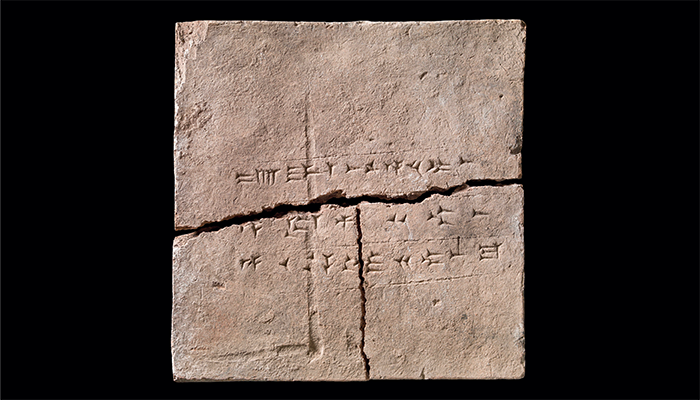
In Kahlu – known as Nimrud in Iraq today – 2,900 years ago, the story of a king, an ancient civilization, and biodiversity was sealed in a clay brick, but not forever…
Discovered by British and Danish excavators in 1949, the brick was eventually donated to the National Museum of Denmark, but its most recent home has been an analytical lab.
An interdisciplinary research team combined their expertise in genomics and assyriology to unveil the rich history of the artifact. “The brick contains an inscription in cuneiform script – one of the oldest known writing systems – recording a dialect of the Assyrian language where it states it was made for the palace of Ashurnasirpal, and it provides a brief genealogy for king Ashurnasirpal II (ca. 883-859 BCE),” says Troels Pank Arbøll, Assyriologist from The University of Copenhagen and one of the principal authors of the study.
But what other secrets could be hidden? The team extracted and analyzed ancient DNA (aDNA) from the clay brick for the first time – discovering a biological time capsule and shedding light on ancient biodiversity.
Although aDNA analysis has been widely employed for the study of museum specimens (for example, dried tissues of animals and humans), the technique has not been previously used to examine ancient clay bricks, due the porous and sensitive materials of the artifacts. With no pre-existing protocol, the team decided to adapt an established methodology used to extract DNA from ancient bones.
“We only had one shot at analyzing small samples of this sensitive material,” says Arbøll. “Furthermore, the short fragments of plant-derived DNA that we were able to recover meant that we had to choose a very conservative identification approach.” Using a MinION sequencer – a small, tabletop device, requiring minimal sample preparation and input – the researchers were able to sequence aDNA and identify plant species from seven different families, including the cabbage ancestor Brassicaceae.
“This indicates that cabbage existed in ancient Nimrud, though it is currently impossible to say with certainty if it was wild or domesticated,” says Arbøll. “If the latter, then this would be an important new perspective in the unresolved discussion concerning where and when cabbage was domesticated. Future studies may shed light on discussions such as this.”
With interdisciplinary efforts, genomic data were translated into historical findings and vice versa – using ancient cuneiform sources to evaluate the information and contextualize the findings.
Following the unexpected success of their aDNA sequencing, the research group is hopeful that they will profile more clay objects and eventually establish a dataset of ancient biodiversity, possibly connecting the changes in biodiversity to ancient civilizations practices, such as plant domestication. “By developing this method in future studies, it is possible to sample unburned clay objects to identify plants, and perhaps even vertebrates, and potentially map changes in their existence throughout history,” says Arbøll.
References
- TP Arbøll et al., “Revealing the secrets of a 2900-year-old clay brick, discovering a time capsule of ancient DNA,” Sci Rep, 13, 13092 (2023). DOI: doi.org/10.1038/s41598-023-38191-w




